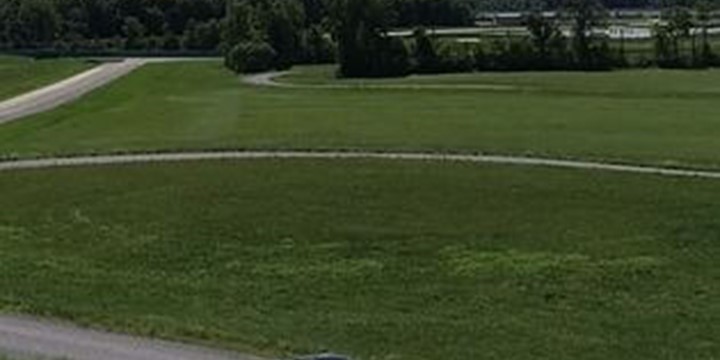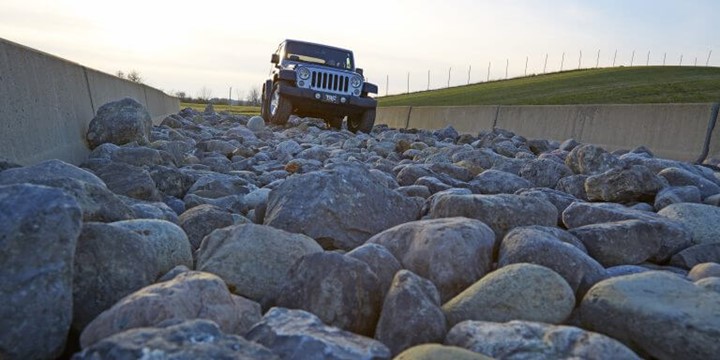RELIABILITY
RELIABILITY
TRC Inc. is your resource to help validate designs and prove test components. Whether its mileage accumulation on one of the largest oval tracks in the world or a combination of durability courses, TRC Inc. has the vehicle testing facilities that can be tailored to meet your specific needs. The complete proving ground contains 4,500 acres, with a wide range of test surfaces. In addition to TRC’s independently operated test facilities, test miles can be accumulated on public roads, metropolitan areas, rural and interstate highways. Driving cycles can be duplicated or developed across the country for all terrains and climates. TRC offers an around-the-clock, seven-day-a-week operation for fast, safe accumulation of test mileage.
Corrosion and Environmental Testing
TRC’s extensive proving ground offers comprehensive corrosion testing. We can etch, corrode, deteriorate, wear and decay just about any exposed materials in open or semi-open systems. Bare steel weight loss coupons are installed with nylon fasteners on the vehicle’s underbody or in other strategic locations. Components can be tested either on a complete vehicle or as attachments to a towed trailer. Corrosion schedules can be designed to accommodate the type of component or material being tested. Materials can be subjected to our corrosion-aging test facilities for accelerated corrosion, including salt spray, salt bath, chip road, troughs of water with stone dust and fire clay, gravel roads and environmental chambers.
Accelerated Durability & Mileage Accumulation
TRC Inc. can duplicate driving routes using acceleration, force, stress, and brake-temperature profiles. The resulting data can be correlated with durability routes on TRC’s roadways. We can alter prototype components, as well as offer comparison testing. Various instrumentation packages can be assembled to measure vehicle parameters, such as temperature, velocity, engine speeds, stress or strain, deflection, load, pressure, and acceleration. Instruments range from visual readouts to full computer data acquisition systems.
Commercial Vehicles
Related Facilities
7.5 Mile Track
The 7.5-mile (12.1 km) High-speed Oval Test Track contains four asphalt lanes on the front straightaway and curves and five asphalt lanes on the back straightaway. The 7.5-mile (12.1 km) test track’s parabolic banking allows neutral speeds up to 140 mph (225 km/h). The test track features level 2-mile (3.2 km) straightaways and possible tests include: mileage accumulation, brake burnishes, fuel economy, and coastdown testing.
Learn More
Skid Pad
This course is used for brake and low-speed durability testing. This 84-ft. (25.6 m) by 9,000-ft. (2,743m) facility contains five smooth lanes for braking, flanked by two lanes utilized for rough road durability testing. The durability courses contain rough road surfaces, such as resonance, impact and chatter bumps, chuckholes, V-ditches, twists and washboards for testing chassis body and suspension components. This facility also contains six crosswind generators capable of producing wind gusts up to 40mph (64.4 km/h).
Learn More
Gravel Durability Course
The level 2.6-mile (4.2 km) Gravel Durability Course provides a series of twists, turns, and straightaways, which is ideal for durability testing.
Learn More
Profile Roads – VDA
Our proving grounds provide a realistic testing environment for ride evaluation of passenger cars and sport-utility vehicles. The facility includes Tire Slap, Unsprung Mass Vibration, Long Curb, Water Drain, Speed Bumps, Road Joint, Undulation Road, Positive and Negative Shocks, Stability Road, Belgian Block Roads, Chip and Seal Roads, Concrete Choppy Road, Concrete Downhill Wavy, Concrete European Union Road and a High-speed Railroad Crossing.
Learn More
Off-Road Mobility Courses
The Off-Road Mobility Courses contain concrete 40, 50 and 60 percent grades, a sand hill, loose stone and dirt hills, a 20 percent washboard hill, frame twists, a multiple-approach angled gully, a multiple log-crossing area, and three different size boulder crossings to provide light-duty vehicles with off-road test experience.
Learn More
Off-Road Durability Courses
The Off-Road Durability Courses contain jagged and riverbed rocks, a rock road, a serpentine sand course, frame twists, an under-guard clearance course, and multiple curb trip courses to provide light-duty vehicles with off-road test exposure.
Learn More
TRCnext.
An automotive innovator.
- People who look, not at where they are, but where they've yet to go.
- People who are driven, not by what they've done, but by what they've yet to do.
- People who not only seize the present, but imaging tomorrow.